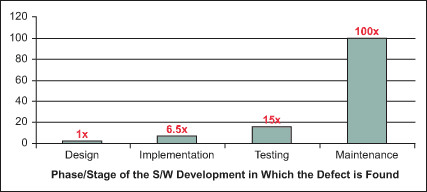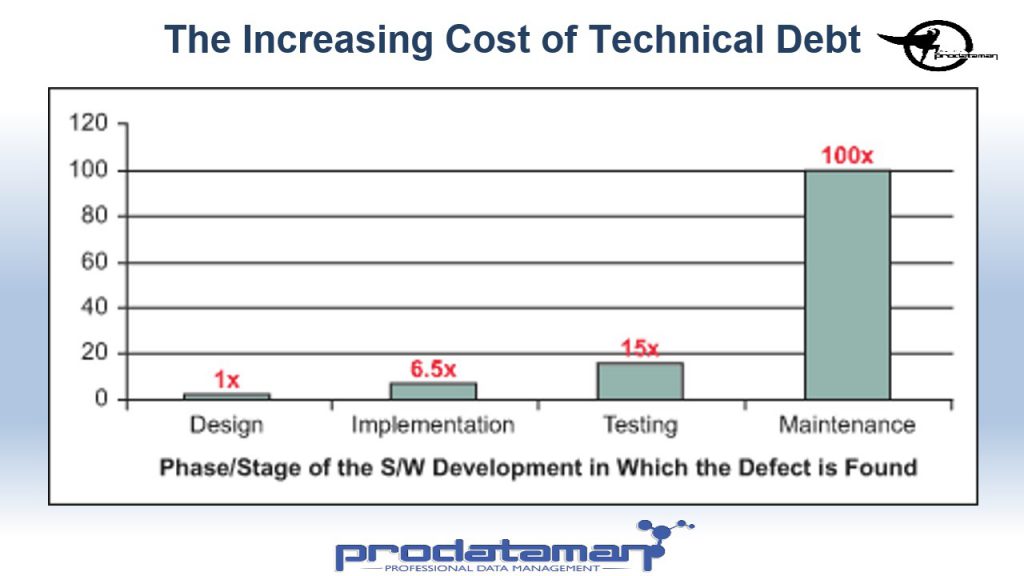The cost of defects increases exponentially as they slip down the delivery pipeline a shift left in quality, security and stability goes a long way toward reducing costs. We must make a shift left in quality, security and stability by surfacing defects earlier in the Delivery pipeline as defects get exponentially more expensive as they slip down the pipeline. A defect caught after development in quality assurance is about 15x costlier than a defect found in design.

From a development perspective, a defect found during implementation is 6.5x costlier than if it were found in design but still about half the cost of finding the same defect in QA. If we have so many gaps in our process that a defect makes it from design, through implementation and QA and somehow finds itself in production the cost is 100x higher than finding that same defect in design.
A more elusive fact we must also take into account is the soft costs associated with the very public statement that the dev (and quality assurance) team “is a joke” as colleague of mine would say. All joking aside this is a team effort it is not only the developers fault but also QA, infrastructure, release management and anyone else responsible for any part of the pipeline. We sink or swim as a team and quality is everyone’s responsibility. If we deliver a crappy piece of software and the stock tanks and the company goes out of business we are ALL out of a job. Reputation cost is a little difficult to quantify but suffice it to say that releasing software riddled with defects and poor user experience does not build confidence in your team’s ability to deliver quality solutions to its customers.
http://www.isixsigma.com/industries/software-it/defect-prevention-reducing-costs-and-enhancing-quality/
Implementing processes such as Test-Driven Development, Continuous Integration and Automated Acceptance Testing / Behavior Driven Development can help teams make that “Shift Left” in quality that reduces the cost of their debt. As teams will typically incur from 10% – 30% technical debt to new work ratio per sprint it’s a good idea to do everything we can to find the defects and reduce debt before is slips down the pipeline towards Maintenance / Production where the costs skyrocket.

